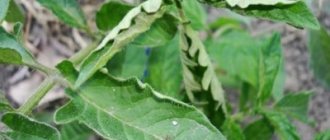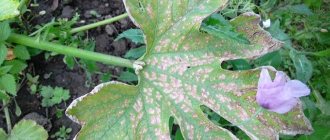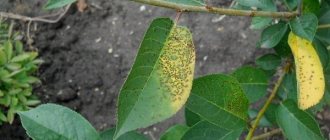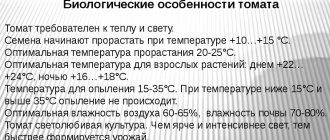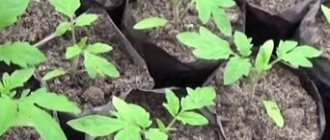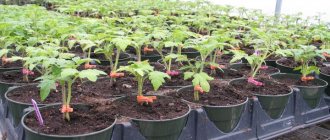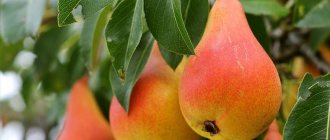Tomatoes belong to the category of common vegetable crops. They are grown by all gardeners in greenhouses and open ground. However, it is not always possible to get a good harvest of tomatoes even if all care rules are followed. The reason for this is fungal, bacterial, and viral diseases. Therefore, it is important to be able to identify the first signs of damage in order to take timely measures to treat or remove infected specimens. This will prevent the massive spread of pathogenic microflora. To do this, you need to study common tomato diseases in order to know how to act in a given situation.
Macrosporiosis or brown spot
The causative agent of the disease is the imperfect fungus Macrosporium. Its spores can remain viable for a long time not only in the ground, but also in seeds collected from infected tomatoes.
Macrosporiosis can appear within 10-14 days after planting seedlings in a permanent place. The disease progresses in the temperature range from +20 to 24 degrees. The fungus especially multiplies against the background of a regular change of sunny and rainy days, with heavy dew. Early varieties of tomatoes are more susceptible to macrosporiosis.
Symptoms
Macrosporiasis can be recognized by dry brown-brown spots that have a round shape. They have a clearly defined concentric zoning. Initially, characteristic signs appear on the lower leaves, and subsequently the fungus spreads to the stems up the plant, petioles and tomatoes. When fruits are affected, the spots become oblong and depressed.
After some time, the affected areas become covered with a gray coating, which indicates sporulation of the fungus. And then the affected leaves and fruits dry out.
Treatment and prevention
To prevent the development of macrosporiosis, it is necessary to use high-quality seed material, water the soil when planting seedlings, and observe crop rotation. Also, 10 days before transplanting the seedlings to a permanent place, it is recommended to spray them with a 1% solution of Bordeaux mixture, and then repeat the procedure 2 weeks after rooting in open ground or a greenhouse.
When signs of disease appear on the bushes, it is recommended to use systemic fungicides to treat them: Polychom, Arcerid, Ridomil Gold, Captan. And if the disease progresses strongly, it is necessary to immediately remove the fruits from the plant, regardless of their stage of ripening, and immerse them in water at a temperature of +60 degrees for 1 minute. After this, the tomatoes need to be wiped dry and ripened in one layer at +25 degrees.
Seedling pests and methods of controlling them
Even insects that are unable to cause significant harm to adult bushes are dangerous for newly emerged sprouts. Neighborhood with indoor flowers is extremely undesirable. Pests of tomato seedlings easily move from them to planting containers.
Whitefly
Whiteflies on tomatoes are easily identified. A gnawing insect with white wings, as if dusted with flour, easily flies from one plant to another. It parasitizes indoor and greenhouse flowers all year round. Tender leaves of seedlings are easy prey for her.
A number of drugs are used to kill whiteflies:
- peritroids;
- organophosphorus compounds;
- neonicotinoids;
- flonicamides.
From folk remedies, infusions are used:
- garlic;
- yarrow;
- shag;
- tar soap solution.
The whitefly is very prolific, laying eggs not only on leaves, but also in hard-to-reach places. It’s easier to prevent its appearance, then you don’t have to think about how to process the seedlings.
Spider mite
These pests on tomato seedlings are difficult to distinguish, since the size of an adult female does not exceed 0.43 mm. Males are even smaller.
At home, they live on indoor flowers. On the site and in the greenhouse they are activated already at 12° C.
It is difficult to identify spider mites on tomato seedlings without a magnifying glass. Signs of seedling damage:
- yellow dots on vegetative organs;
- thin cobwebs and gray coating on the back of the leaves.
Before treating seedlings, you need to choose the right drug. Only insecticides with acaricidal properties act on spider mites, since they are not an insect, but an arachnid.
Destroying the pest is difficult. It may only be possible to contain the population until the harvest.
To combat spider mites use:
- Anti-mite;
- Fitoverm;
- Karate;
- Bitoxibacillin;
- Karbofos;
- Akarin;
- Aktelik.
Sciarides
The fungus gnat or sciarid grows in flower pots and other containers filled with soil due to high humidity. The insect does not harm adult plants, it only irritates the owners. But sciarid larvae, deposited in containers with seedlings, eat up its roots.
You can get rid of the pest by simply adjusting the watering. It does not survive in dry substrate. It is useful to peel a clove of garlic and bury it in a planting container - the pest is repelled by the strong smell. The soil is sprinkled with dry ash.
Aphid
The flying gnawing pest begins to feed already at a temperature of 12° C. It is easy to notice with the naked eye. First of all, aphids on tomatoes attack the leaves. They develop a characteristic sticky coating called honey.
The pest can be destroyed by treating it with an appropriate insecticide or a solution of laundry soap. Aphids quickly adapt to chemicals, so they need to be changed.
Pets
The problem can only bring a smile to gardeners who have not encountered it. For those whose cat slept on the seedlings, or whose parrot was released to fly and pulled out half of the seedlings with its beak, it’s not funny.
How to protect tomatoes from pets needs to be thought out in advance. Or grow seedlings in a room where they do not have access.
Alternaria or dry spotting
The disease affects tomatoes in open ground and greenhouses. Its causative agent is the fungus Alternaria solani Soraue. Alternaria blight progresses during the ripening period of tomatoes at a temperature of +25-30 degrees. The provoking factor is sudden changes in day and night temperatures, as well as heavy dew.
Alternaria blight is especially dangerous for tomatoes grown in film greenhouses. In this case, the first signs become noticeable already on the 2nd day after the pathogen hits the plant. Without control measures, yield loss can be as high as 78%.
Symptoms
Alternaria blight appears on tomato leaves in the form of brown round spots, up to 1.5 cm in diameter. Moreover, they always have concentric zoning. At high air humidity, the affected areas become covered with a dense black layer, which indicates sporulation of the fungus.
With further progression of the disease, the plates die, the stems and petioles are affected, which leads to their breaking off. Against this background, the tomatoes begin to fall off, ripening at an accelerated pace, never reaching the required size. The fungus also spreads to the seeds, after which they darken and lose their viability.
Treatment and prevention
Alternaria blight belongs to the category of diseases with an accelerated rate of development. Therefore, in order to preserve the harvest, it is necessary to pay increased attention to preventive measures.
Among them:
- timely removal of plant residues;
- spraying bushes with Fitosporin;
- use of fertilizers containing potassium.
To slow down the spread of infection when the first alarming symptoms appear, it is necessary to initially remove and destroy the affected leaves, trim the shoots to healthy tissue, and then treat the tomatoes with Ridomil Gold, Quadris, Revus. Repeat the procedure every 10 days, but no more than 3 times per season. It is also necessary to water the soil with Barrier once a month.
Preventive measures against tomato diseases
Any disease, including for tomatoes, is better to prevent than to treat. After all, many diseases of plant crops significantly reduce the yield and quality of the resulting fruits, and some are difficult to treat.
Gardening specialists recommend the following preventive measures against a number of tomato diseases:
- Adhere to all rules for crop rotation. Do not plant tomatoes in an area where tomatoes and other representatives of the nightshade family, suffering from the same ailments, grew last season.
- They dig up the ground in the autumn before frosts so that the larvae of insect pests and pathogens freeze out.
- Remove all remnants of vegetation in the fall so as not to create comfortable conditions for harmful microorganisms to overwinter.
- In the autumn and spring, carry out complete disinfection of the greenhouse, as well as the soil.
- If diseases are detected in large quantities, replace the soil in the greenhouse.
Find out in more detail what pests and diseases affect tomatoes in a greenhouse. - Carry out preventive treatment with biological products such as Bayleton and Actellik.
- Disinfect seeds before planting in the soil using appropriate chemicals (Epin, Humate or Zircon solution).
- Use “Gumat” for watering, and also spray seedlings with it in the morning at a concentration of 0.002%.
- Carry out proper watering with warm, settled water. Water at the root and avoid oversaturation with moisture, as well as drying out of the soil. Water the seedlings during the day rather than at night when the temperature drops. But plants planted in the ground in warm weather are watered when there is no heat (morning and evening).
- Disinfect containers for planting if they have already been used.
- Disinfect the soil (in the oven, with manganese, boiling water).
- Be sure to add fertilizing to enrich the soil with beneficial microorganisms. For this purpose, drugs are used that include fungicidal, phosphomobilizing and nitrogen-fixing bacteria and potassium. After applying such preparations and planting the seed, 2–3 days should pass.
- Carry out seed treatment - calibrate, soak, harden, warm up, treat with fertilizers and growth stimulants, disinfect, bubble. There is no need to do all the procedures at once. It is enough to select 2-3 treatments. For example, harden and disinfect. Disinfection must be carried out without fail, for example, soak in potassium permanganate for 20 minutes. and rinse.
- Observe the timing and depth of sowing.
- Do not use fresh manure for the soil mixture, as the salt it contains interferes with the absorption of nutrients.
- Maintain the temperature within +22…+25 °C and optimal humidity. Heat greenhouses and do not plant seedlings until the ground has warmed up and the threat of frost has passed.
- When growing seedlings, avoid drafts and ensure good lighting. If there is a lack of light, you can use lamps (fluorescent or phyto).
- Apply fertilizers in a timely manner to strengthen and develop the plant.
We advise you to read about how to spray tomatoes for ovary. - Avoid very dense plantings. In cramped conditions, seedlings develop poorly, but good conditions are created for fungi and bacteria.
- Use chemicals to strengthen the plant, treating the roots when diving. Carry out preventive spraying (boron, iodine, yeast, copper sulfate, garlic infusion).
- Buy seeds of varieties resistant to various diseases from reliable suppliers and pay attention to the expiration date.
Mosaic
A dangerous viral disease that equally affects tomatoes in greenhouses and open ground. When infected, the plant does not die, but cannot fully develop. This leads to a decrease in yield and loss of taste. The causative agent of mosaic is the Tobacco mosaic tobamovirus virus. Crop losses due to this disease are 30-35%.
Symptoms
The mosaic appears on the leaves as alternating spots of green and yellow. Also, individual areas darken, and the plates themselves curl. With the rapid progression of the disease, characteristic spots appear on the fruits. The mosaic gives the impression that the bush was scalded with boiling water.
Treatment and prevention
The virus is carried by insect pests, and it can also enter an area with contaminated soil or seeds. Therefore, to prevent the development of the disease, it is recommended to treat the seedlings before planting in a permanent place in a solution of potassium permanganate for 20 minutes.
Affected bushes must be destroyed, since the mosaic cannot be treated.
Diseases: photos, descriptions and their treatment
We present the most common tomato diseases in pictures, their descriptions and methods of combating them.
Blackleg
This is a very common fungal disease, the development of which is promoted by:
- lack of light;
- too dense placement of seedlings;
- dampness and low temperature.
The fungus can live in the soil, on seeds and seedling containers.
The disease is expressed in rotting of the root collar, as a result the stem tilts and falls, and the plant dies. For prevention purposes, the soil is calcined or treated with steam, fertilized with ash or sand, and the seeds are soaked in a solution of potassium permanganate.
The seedlings are treated with fungicides (Fitosporin-M, Baktofit, Fitolavin), the soil is disinfected by abundant watering with a solution of potassium permanganate or copper sulfate.
The fungus is very quickly transmitted from a diseased plant to a healthy one, so infected specimens should be removed and destroyed.
White spot or septoria
Septoria is also a fungal disease that affects more than 40 species of cultivated and wild plants. White spotting in tomatoes is a common occurrence. It appears as gray spots with a dark edge on the leaves of seedlings; watery blisters may also appear. Then septoria spreads to the stem, and the bush dies.
The causative agent of the disease is the fungus Sephtoria lycopersici, which easily spreads through airborne droplets at high humidity and high temperatures.
To prevent the disease, proper prevention is important:
- disinfection of the soil before planting seeds;
- processing of tomato seed material;
- maintaining optimal growing conditions (light, humidity, temperature).
The following is used in treatment:
- Fungicides (Revus, Thanos).
- Bordeaux liquid.
Brown spot
Brown spot - cladosporiosis - mainly affects tomatoes growing in greenhouses. During the growing season and active flowering of seedlings, light green or yellow small spots appear on the outside of the leaves, and a gray coating appears on the back.
The disease spreads from bottom to top, preventing normal nutrition of the plant. This does not interfere with fruit setting, but they grow and ripen extremely slowly.
Cladosporiosis is provoked by increased air and soil humidity, but the fungus easily tolerates frost and drying out and infects soil, garden tools and plant remains.
For the purposes of protection and prevention:
- Tomato seeds, soil are disinfected and tools, seedling boxes and other equipment are disinfected.
- Infected bushes are uprooted and burned, the remaining plantings are neutralized using Bordeaux mixture.
- Regularly ventilate the room with seedlings and monitor the humidity level.
In the treatment of brown spot in tomatoes, both folk remedies and chemicals are used.
The following treatment is considered gentle ways to combat the disease:
- a solution of milk and iodine (15 drops of iodine and 0.5 liters of milk and 5 liters of warm water);
- decoction of ash (300 g of stove ash is diluted in a small amount of water, brought to a boil and boiled for 20 minutes, then dissolved in 10 liters of water);
- slightly pink solution of potassium permanganate;
- whey solution (1 liter of whey per bucket of water).
The resulting solutions are sprayed onto the leaves of the seedlings. Broad-spectrum fungicides (Bravo, NeoTek) are effective.
Late blight or late blight
One of the most common fungal diseases in tomato seedlings. It appears as subcutaneous brown spots on the leaves, around the stalks, and later on the fruits.
The fungus Phytophthora infestans is most active during differences in day and night temperatures and increased soil moisture. Excess nitrogen in fertilizers can also provoke the disease.
As a preventive measure:
- Seeds are disinfected in a solution of potassium permanganate or hydrogen peroxide.
- Good results are obtained by treating affected plants with Bordeaux mixture, copper sulfate, a solution of garlic with potassium permanganate, or kefir diluted in water.
- Among the fungicides used are Oksikhom, Metronidazole, Fitosporin, Trichopolum, Barrier.
Fusarium or fusarium wilt
Furious wilt, caused by a fungus, leads to the death of nightshade crops. Externally, the disease manifests itself in the withering of the tops of plants, even in the case of moist and well-fertilized soil. Another sign - dark brown vessels on the cut - will help distinguish fusarium from the similar disease verticellosis.
Factors favorable for the development of the disease:
- bad light;
- poor quality watering (high humidity);
- excess nitrogen and chloride fertilizers in the soil.
Treatment of infected bushes is usually not effective, so they are removed to stop the spread of the infection.
The only method of control is prevention:
- dressing seeds and soil with potassium permanganate;
- fungicide treatment.
Following the rules of crop rotation helps to avoid fusarium and other diseases. Thus, planting tomatoes in a place where cabbage, pumpkin or cucumbers previously grew will eliminate the need to apply nitrogen fertilizers.
Root rot
The term “Root rot” combines several fungal diseases:
- Anthracnose (Colletotrichum fungi) or black spot rot of roots. Symptoms most often appear only on ripe fruits as depressed brown spots. In fact, infection begins from the roots.
- Late blight rot of fruits and roots (Phytophthora fungi).
- Root fever (fungus Pyrenochaeta lycopersici) or suberization of tomato roots. At the initial stage of the disease, rotting of the roots is observed, then the affected areas swell and cracks form on them.
- Fusarium rot of roots and root collars (fungus Fusarium oxysporum).
- Southern sclerotial rot (Sclerotium rolfsii fungus). At the soil level, the stem of the plant is covered with a brown spot, and the roots rot in the soil. A cobwebby white coating and small yellow-brown microsclerotia are also characteristic.
These fungal infections share degenerative changes in the root system of tomatoes, but they also have other similar symptoms:
- lethargy of plants even with normal watering;
- darkening of the root collar, thinning of the lower part of the stem;
- dark spots and dents on stems and leaves.
Seedlings are at risk of root rot under the following conditions:
- Waterlogging of the soil. In damp soil, pathogenic microorganisms are activated, and when they get from the soil into moist air, they are easily transferred from a diseased plant to a healthy one.
- Thickened crops. Bushes growing too closely prevent each other from receiving enough light, contribute to stagnation of water in the soil and a faster spread of infection.
- Sudden changes in temperature. If the difference between air and soil temperatures is too large, a fertile environment for the development of fungi is created.
- Insufficient lighting. Too short daylight hours, the shadow side and the lack of additional lighting devices often cause seedling diseases.
- Mechanical damage to plants. If the epidermal barrier of the plant roots is broken due to careless replanting, weeding or loosening, a passage into the tissue of the root system is open to infection.
- Insufficient hygiene of equipment, planting containers and irrigation water. Fungal diseases are very resistant and spread, including mechanically.
Drafts, structureless light substrates, and unreasonably large containers for planting are also dangerous for seedlings.
The following rule will help maintain optimal humidity: the deep layer of soil should always be moderately moist, and the top layer should dry out quickly. For this purpose, rare but abundant irrigation is carried out.
In the treatment of root rot, sulfur-based preparations are used - colloidal sulfur, Tiovit Jet - they can be used to water the soil. And systemic fungicides, such as Ridomil Gold (based on mancozeb) or Fundazol (based on benomyl), are enough to spray on the plant.
Folk remedies come to the aid of those who are afraid to use chemicals. For example, treating the upper part of the roots and the lower part of the stem of tomatoes with an iodine solution (iodine and water in a ratio of 1:4).
A slightly pink solution of potassium permanganate can be poured over the soil, and the upper part of the roots, root collar and lower part of the stem can be powdered with a mixture of crushed chalk and wood ash (in a 1:1 ratio).
Mosaic
This is the most common viral disease in tomatoes. Its main symptoms are a color “mosaic” of dark and light shades of green, sometimes yellow, as well as curled leaves or growths on them. Later, deformation and darkening of the fruit occurs.
The main causative agent of the disease is aphids, but it can also be transmitted through equipment, soil and infected weeds. Superficial or deep infection of seeds by the pathogen is possible.
High temperature and high soil moisture favor the development of mosaics. The fight against the disease begins with preventive disinfection of seeds, sterilization of soil, planting containers and tools.
Sprouted seedlings can be treated with boric acid or whey. Popular wisdom suggests that the seedlings can be watered with a solution of skim milk (1:5 or 1:10 with water).
It is not recommended to cut or pick leaves damaged by the mosaic, because the infected sap remains on tools and hands and the pathogen is spread throughout the garden. Insecticides will help get rid of aphids and other disease carriers, but this will not save infected plants and they will have to be destroyed.
Gray rot
This disease is often confused with late blight, but gray mold is caused by the fungus Botrytis cinerea. It first appears as an “ashy” coating on young leaves, then as gray mold on the stems of seedlings, and often a fluffy coating appears on the spots. Necrosis develops inside the stem of an infected bush, the plant cannot fully feed, withers and soon dies.
High humidity, saturated with nitrogen, and insufficiently loose soil are the main factors for the spread of the disease.
At the first signs of disease, it is recommended to ventilate the room in which the seedlings are grown.
Infected bushes cannot be treated, so they are removed. The rest are treated with chemicals (Barrier, Barrier, Fundazol, Bayleton) or homemade solutions: copper sulfate, laundry soap, boric acid, baking soda.
At the initial stage of the disease, a paste of glue and trichodermin can help. It is applied to the affected area, which prevents the rot from spreading further.
Powdery mildew
The infection affects tomatoes regardless of the region and growing conditions (seedlings, non-seedlings, greenhouse or ground). The main causative agents of this disease are the fungi Oidium erysiphoides and Oidiopsis taurica Salm.
The first causes a white coating on the petioles and stems, the second leads to the appearance of yellow spots, and later a powdery coating on the leaves. The leaf itself becomes deformed and darkens, gradually dying.
Low temperatures, excessive watering, and proximity to infected weeds contribute to the disease.
Soaking the seeds in a solution of Epin or Immunocytophyte can increase the resistance of tomatoes to powdery mildew.
To combat tomato disease, this is what you need to spray it with: Topaz, Quadris, Bayleton fungicides. The use of a 0.1% solution of sodium salt of humic acid has worked well. Treatment with a 10% solution of whey or skim milk is also effective.
Fomoz or brown rot
The disease affects tomato fruits, regardless of their degree of ripeness. The causative agent is the fungus Phoma destructiva. The disease spreads quickly in rainy, windy weather, as well as with excessive application of nitrogen fertilizers to the soil. Favorable temperature for fungal propagation is +18-22 degrees. Infection occurs through open wounds on the plant as a result of pinching, cracking of fruits and the activity of pests.
Symptoms
Phoma can be recognized by a brown spot in the area of the stalk. Over time, the fungus grows deep into the tomato and covers its core. The surface of such tomatoes becomes lumpy, and when you press on the spot, your finger is easily pushed inward. Affected fruits are unfit for consumption.
With Phoma, the leaves become covered with dark spots, which subsequently grow. As the disease progresses, black areas also appear on the stems and shoots.
Treatment and prevention
To prevent the development of fomosis on tomatoes, it is necessary to control soil moisture and the use of nitrogen fertilizers. It is also important to treat the soil with copper sulfate before planting seedlings and to treat the seeds in a solution of potassium permanganate.
To treat Phoma, when the first signs of the disease appear, it is recommended to remove the affected fruits, and then spray the bushes with Hom or Bordeaux mixture, repeating the procedure after each rain.
Viral
There are a number of tomato diseases caused by viruses carried by parasitic insects:
Aspermia
This viral disease is very easy to identify externally. Bushes of seedlings or adult plants will be very tall, the stem will be very frail, and the generative organs will be underdeveloped. The flowers grow together, and the leaves become smaller and change their green color to brown. Over time, the leaves fall off, leaving thin membranes. The plant becomes infected with a virus carried by insect parasites or from nearby infected plants.
Crop losses due to aspermia can only be avoided by disinfecting or eliminating diseased plants, as well as by destroying insect vectors.
Bronzing
With the development of this viral disease, yellow-brown ring patterns are visible on plant leaves and young green fruits. The leaves begin to curl and die, and the fruits become light and simply fall off. Infection occurs through thrips and weeds.
The virus cannot be treated; it can only reduce its activity at high air temperatures (+35-+45).
To avoid infections, you need to carefully control weeds in the area and destroy thrips. Infected plants cannot be cured.
Yellow curl
This viral disease is also called tomato jaundice. A diseased plant has curled, rusty, small leaves. The entire plant becomes mottled, brownish-green. The fruits of such plants do not ripen, but only turn yellow and wrinkle. Whiteflies infect plants with this virus.
There are no treatments for the disease. To prevent the birth of whiteflies and the development of curl, you can treat the soil before planting seedlings or sowing seeds.
There is only one tomato variety resistant to this disease - F1 Senzafin.
Top bushiness
This disease can begin to develop at the very beginning of seedling germination. White dots first form on the leaves, which then darken and cause necrosis on the leaf surface. The leaves of the seedlings stretch out in length and then curl downward. Such plants are in most cases very frail. The end result is that the leaves become coarser and their veins turn blue. The disease is transmitted through aphid larvae in the soil or through an adult insect. There may also be already infected seeds.
The virus dies only at high air temperatures up to +75.
There are no means of protection against bushiness, except for agrotechnical preventive measures.
Mosaic
A viral disease caused by tomato mosaic virus. First, the leaves of the plant begin to deform and become covered with green spots. Then the disease goes into the form of a streak.
To avoid infection, you need to choose tomato varieties that are resistant to the mosaic virus. To combat the disease, before planting, it is worth disinfecting the soil and treating the seeds, and spraying the seedlings with a solution of the drug Fitolovin.
Threadiness of leaves
The plant becomes infected with cucumber mosaic virus or tomato mosaic virus. Infected seedlings or adult plants with fruits die completely. The disease manifests itself in the fact that the leaves of the plant become like strings. Externally, the leaf looks like a fern leaf. This disease can spread to plants through aphids.
Disease prevention measures will be agrotechnical (disinfection of soil and seeds). It is also worthwhile to identify and destroy all pests in a timely manner.
Apical rot
The disease develops against the background of a biological disorder in the development of tomatoes. It only affects fruits. Provoking factors: lack of calcium in the soil, insufficient watering. Blossom rot progresses during the filling stage of tomatoes. Most often this happens when there is a sharp change from a dry period to rainy weather. Tomato species with elongated, large fruits and thin skin are more susceptible to the disease.
Symptoms
At the initial stage of development of tip rot, small gray dots appear on the tops of the fruit. As tomatoes grow, they increase significantly in size and become dark, merging with each other, forming a large spot.
Affected tomatoes become deformed, ripen prematurely, but lose their taste and become unsuitable for eating.
Treatment and prevention
To prevent the appearance of blossom end rot, it is necessary to observe crop rotation, treat the seeds before planting in potassium permanganate, and liming the soil at a high level of acidity.
If signs of blossom end rot appear, it is necessary to initially spray the bushes with calcium nitrate at the rate of 30 g per bucket of water or calcium chloride in the same proportion. Moreover, it is necessary to treat not only affected plants, but also healthy ones. And subsequently carry out root feeding with these fertilizers.
How to spray and treat tomato seedlings for prevention
Attention should be paid to preventive measures throughout the growing season of tomatoes, right up to the fruiting stage. Plants should also be inspected regularly so that immediate action can be taken if something happens. Prevention of diseases is carried out at the stage of pre-sowing seed treatment, when they are not simply soaked, but treated with potassium permanganate, hydrogen peroxide or a weak solution of formaldehyde, where it is enough to hold the seeds for 20-30 minutes.
It is also worth paying attention to the preparation of planting soil. To rid the soil of pathogenic bacteria and fungal spores, it can be calcined in the oven or microwave. If this seems too troublesome to you, at least scald the soil with boiling water and spill it with a solution of potassium permanganate.
On a note! Purchased soil does not need such treatment; it is disinfected in production. But this only applies to time-tested, large suppliers.
At the stage of growing seedlings, preventive spraying can be carried out with solutions of industrial preparations, using: Fitosporin, Baksis, Zaslon, Barrier, Ecosil. Plants are treated on the windowsill for the first time a week before planting in a greenhouse or open ground. A week after planting, the plant is sprayed again with a solution of one of the preparations. Subsequent treatments are carried out before and after mass flowering of tomatoes, and then during the period of fruit formation.
Black bacterial spot
The disease develops at high humidity and temperatures within +15-22 degrees. The causative agent is the aerobic gram-negative bacillus Dowson. Bacterial spotting progresses during periods of intensive fruit growth. The bacterium can survive on seeds and weeds. It penetrates into the plant through microscopic wounds.
Symptoms
The disease manifests itself locally on stems, leaves, and petioles. It can be recognized by watery, shapeless spots 2-3 mm in size. They have a narrow chlorotic halo. Sometimes the spots merge into a single whole and spread to the veins. With severe damage, the leaves suddenly turn yellow and fall off.
As the disease progresses, it spreads to green fruits in the form of dark spots, which are bordered by a watery halo. Subsequently, they increase in size and become depressed. As a result, the skin of the fruit in the affected area cracks along the periphery and the spots turn into scabs. Around them, the tissues become watery with deep rot.
Treatment and prevention
Bacterial black spot is easier to prevent than to treat later. To do this, it is necessary to observe crop rotation, disinfect seeds at a temperature of +52-53 degrees and purchase varieties that have increased resistance to bacteria.
The disease cannot be treated, but its development can be slowed down and the negative impact of the bacteria on tomatoes can be reduced if the bushes are treated weekly with a 1% solution of copper sulfate or Bordeaux mixture.
Main diseases of tomato seedlings
Diseases that affect tomato seedlings can be divided into: fungal, viral, bacterial and non-infectious diseases.
- The fungus is activated in conditions of high humidity and low temperatures.
- Viral diseases can arise due to low quality seeds, poor soil, through transmission through pests, as a result of weakened immunity due to improper care.
- Bacterial diseases are caused by approximately the same reasons.
- Non-infectious diseases arise due to the unbalanced composition of the soil; they can be caused by either a deficiency or an excess of individual microelements.
Irregularities and blisters on the back of tomato leaves
Overwatered tomato plants can look very similar to underwatered plants, so if you're having trouble telling the difference, notice if you see these signs when the soil around the plants is still moist.
Do not water tomato seedlings with signs of waterlogging on the leaves; let the soil dry
Overwatered plants may have wilted or yellowed stems and leaves, or the leaves may develop bumps and blisters and fall off completely if the plants continue to receive too much water.
Another way to distinguish overwatered plants from underwatered plants, if the situation is severe enough, is to check the roots. A plant that has received too much water for a long time may have roots that are dark in color, as opposed to the pale color of healthy roots, or the roots may have a slimy consistency.
In some cases, you can save an overwatered plant by gently pulling it up, shaking off excess soil, and placing it on a bed of newspaper. Leave the plant on the newspapers until most of the excess water has been absorbed. Then replant it in a container that fits its roots, adding compost around the plant.
White spots on leaves, leaves curled
Aerial root primordia on tomato stems combined with curled leaves at the tips and ends of branches may indicate herbicide exposure. Herbicides mimic the effects of the plant hormone auxin and can also cause abnormal stem growth and leaf deformation. This may happen if you bought or received ready-made tomato seedlings as a gift and cannot say for sure whether the plants were processed or stood next to other plants being processed. A weed control product may have been applied. The good news is that tomato plants can resist herbicides and often outgrow the problem when exposure stops. So, if you (or your neighbor) have been spraying Roundup nearby or when the wind is blowing, give your tomatoes a good watering and the leaves will soon stop curling.
Quite often you can observe a slight formation of aerial roots in the lower part of the stem, while the leaves look devoid of elasticity. Even if you water properly, tomatoes can easily become stressed in containers. In hot weather, place shade over the plants at midday. Or move containers to the shade during the hottest hours of the day.
Prevention measures
Compliance with preventive measures will help not only to grow lush and viable tomato seedlings, but also to prevent them from being damaged by fungal, viral, bacterial and non-infectious diseases.
- Before sowing, tomato seeds must be disinfected. To do this, you can use a weak solution of potassium permanganate, in which they are soaked for 20 minutes.
- The substrate for growing seedlings also needs to be disinfected - spilled with a solution of potassium permanganate or calcined in the oven.
- When sowing seeds, you need to keep a distance and avoid crowding the plantings.
- Do not allow moisture to stagnate in the soil. It is necessary to moisten the soil under the seedlings only as it dries.
- Containers with seedlings must be placed near windows on the east side. If this is not possible, the seedlings must be shaded from direct sunlight from noon to 16:00.
- Ventilate the seedlings in a timely manner by lifting the glass or plastic film that covers the pot or container. In this case, you need to ensure that the seedlings are not exposed to a draft.
- To prevent fungal infections, do not allow air to stagnate in the room where tomato seedlings are grown.
- When viral diseases are detected, all affected seedlings must be uprooted and burned. This will help stop the further spread of the disease and preserve healthy seedlings.
- For planting, it is best to use varieties and hybrids that are resistant to viral and fungal diseases.
- In garden and greenhouse beds where you plan to transplant tomato seedlings, you must follow the rules of crop rotation.
When growing tomatoes, gardeners face many difficulties, including diseases of tomato seedlings. They can be fungal, viral, bacterial or non-infectious. Each vegetable disease has its own specific symptoms and treatment methods. Competent prevention, the ability to identify seedling disease at an early stage and take the necessary measures to treat it will help to obtain healthy, viable seedlings capable of producing an excellent tomato harvest.
Summary table of diseases and treatments
Every gardener needs to know the main signs of diseases of tomato seedlings and the most effective means for treating them.
| Disease | Drugs for treatment |
| Late blight | Barrier, Barrier, HOM, Abiga Peak |
| Septoria | Copper sulfate, Bordeaux mixture, copper oxychloride |
| Rotten | Trichodermin, Maxim, Fundazol |
| Fusarium wilt | Maxim, Previkur, Vectra |
| Powdery mildew | Previkur, Skor, Topaz, Quadris, Strobi |
| Blackleg | Potassium permanganate, copper sulfate, Maxim, Fitosporin, Trichodermin, Vitaplan, Planriz, Baktofit |
| Cladosporiosis | HOM, Quadris, Abiga Peak, Barrier, Barrier |
| Alternaria blight | Quadris, Acrobat, Ditan |
| Stolbur | Aktara, Konfidor |
| Black spot | Copper sulfate, Bordeaux mixture, HOM |
| Mottling | Fitolavin, copper sulfate, Trichodermin, Baktofit |
| Mosaic | Potassium permanganate solution |
| Aspermia | Does not exist |
| Streak | Does not exist |
| Burns | Azofok, nitrophoska |
| Damping off of sprouts | Potassium permanganate solution, Fitosporin-M |
| Oedema | Proper care |
The ability to timely detect a disease on tomato seedlings helps to stop its further development and select the most effective drug for treatment.
How to grow healthy seedlings: useful tips
To grow high-yielding varieties, you need not only to remember about diseases of tomato seedlings and their treatment, but also to follow recommendations on agricultural practices.
- Seedlings need sunlight. If it is not possible to place it on the windowsill, then use fluorescent lamps. Daylight hours for seedlings should last up to 16 hours. It is important to avoid burns - direct rays of the sun can harm delicate leaves.
- It is recommended to irrigate seedlings with a spray bottle to maintain optimal humidity. You can install a humidifier next to the planting container.
- You need to monitor the temperature: no more than 25 degrees during the day, 15 degrees at night.
Seedlings need fertilizing, timely picking and hardening.
White spots
Septoria
Septoria disease is caused by the fungus Septoria lucopersici, which penetrates tissue cells through stomata. Young plants are resistant to the disease: indoor seedlings have strong immunity, and if the rules of agricultural technology are followed, the seedlings are completely protected from septoria.
After planting in the ground, when exposed to non-sterile conditions, the plants become infected from the actively developing mycelium. Favorable factors are increased soil moisture.
The main symptom of septoria is the appearance of watery, round or angular spots with a diameter of 2-5 mm on the lower leaves. The dangerous period is flowering time. The spots quickly acquire a clear grayish-white hue and a characteristic brown edging.
At first, the brown edging occupies the entire area of the spot, but as the septoria spots progress, they become more and more white, and black dots appear in the middle. Spot-free areas of the leaf turn yellow.
Prevention and treatment:
- compliance with the temperature regime for growing seedlings;
- treating plants with fungicides according to instructions depending on the age of the seedlings. They use Previkur, Acrobat MC, Ridomil;
- treatment with copper-containing preparations;
- prevention by spraying with biological fungicides;
- the use of folk remedies is effective only in the initial stages: spraying with iodine-milk solution, weak solution of manganese, whey.
Important: the earlier the fungus infects plants, the more difficult it is to cope with the disease and the higher the risk of seedling death.
Powdery mildew
A disease caused by the fungus Leveilluia taurica. At the first stages, the pathology resembles white rot and peronosporosis, but as it progresses it acquires characteristic symptoms.
A white powdery coating appears on the leaves. A characteristic feature is brown balls on the surface of leaf blades and twigs. At the same time, ring-shaped powdery deposits form on the back side of the leaf. The lower leaves are under attack. The disease progresses rapidly.
Prevention and treatment:
- agricultural technology: removal of affected plants, replacement of the top layer of soil, application of potassium-phosphorus fertilizers, correction of the irrigation regime;
- folk remedies: effective in the initial stages. Most often, spraying with a soda-soap solution or whey solution is used;
- chemicals: fungicides are effective for severe damage. Optimally – Fundazol, Quadris, Topaz;
- biological preparations: effective during fruit ripening. They use Fitosporin and Alirin.
Leaf burn
Tomatoes are considered a warm and light-loving crop, but this does not mean that the seedlings should be placed in direct sun. If seedlings are grown on southern windows, then in April it should be shaded by installing protective screens.
The first sign is white transparent spots on the leaf blades. Damage to individual specimens is typical: seedlings located closer to the window are affected.
If the cause of white spots on tomato seedlings is a burn, then the plants can be saved by treating them with Epin solution.
